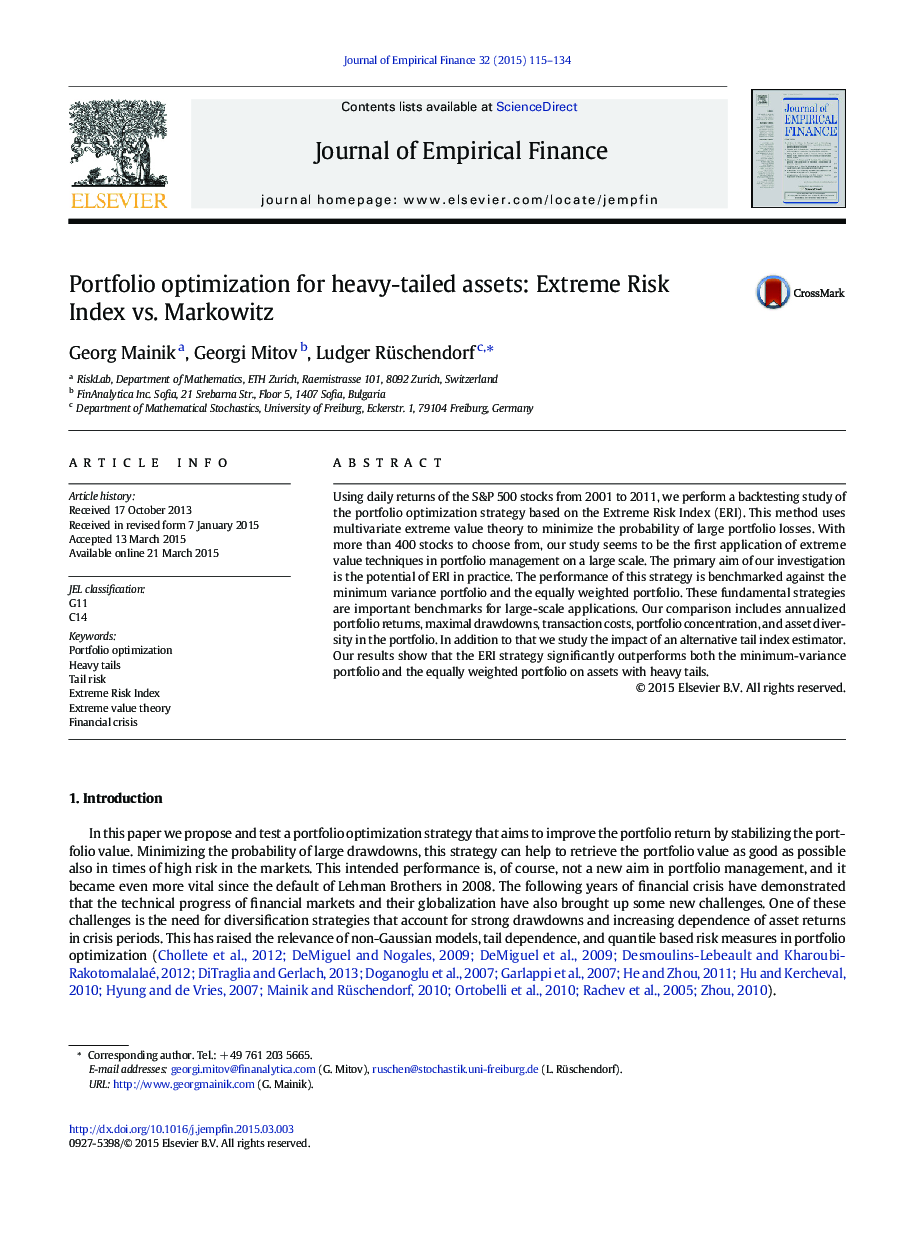| Article ID | Journal | Published Year | Pages | File Type |
|---|---|---|---|---|
| 958356 | Journal of Empirical Finance | 2015 | 20 Pages |
•Novel portfolio optimization method (ERI) based on extreme value theory•Large scale empirical study on more than 400 assets (S&P stocks)•Favourable comparison for heavy tailed assets compared to MV and EW portfolio
Using daily returns of the S&P 500 stocks from 2001 to 2011, we perform a backtesting study of the portfolio optimization strategy based on the Extreme Risk Index (ERI). This method uses multivariate extreme value theory to minimize the probability of large portfolio losses. With more than 400 stocks to choose from, our study seems to be the first application of extreme value techniques in portfolio management on a large scale. The primary aim of our investigation is the potential of ERI in practice. The performance of this strategy is benchmarked against the minimum variance portfolio and the equally weighted portfolio. These fundamental strategies are important benchmarks for large-scale applications. Our comparison includes annualized portfolio returns, maximal drawdowns, transaction costs, portfolio concentration, and asset diversity in the portfolio. In addition to that we study the impact of an alternative tail index estimator. Our results show that the ERI strategy significantly outperforms both the minimum-variance portfolio and the equally weighted portfolio on assets with heavy tails.
